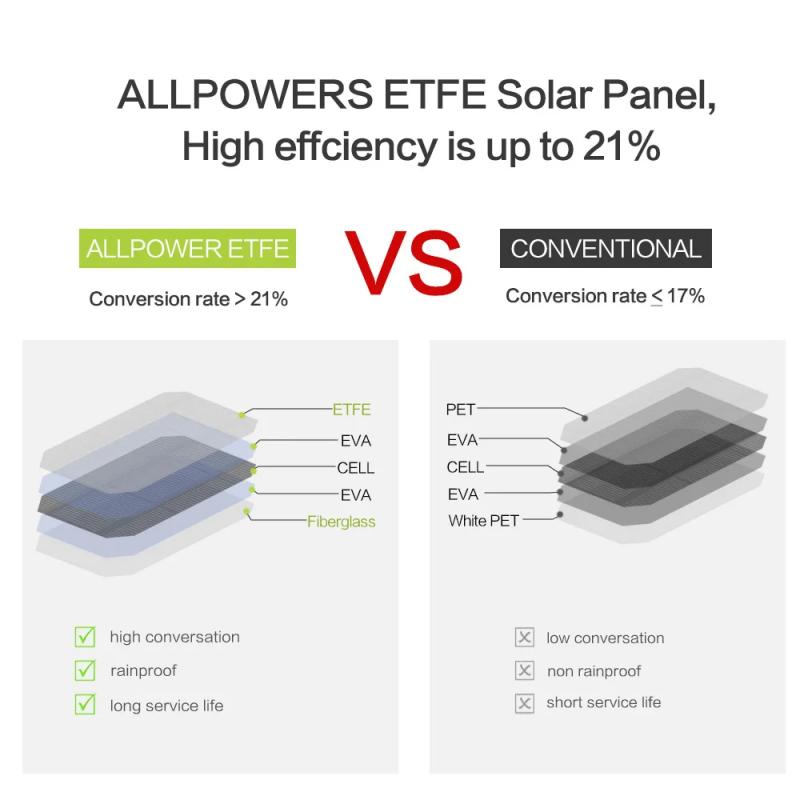How Much Energy Does A Solar Panel Create?
Solar energy has become a cornerstone of the renewable energy movement, offering a sustainable and environmentally friendly alternative to fossil fuels. One of the most common questions people have when considering solar energy is, "How much energy does a solar panel create?" This question is crucial for homeowners, businesses, and policymakers alike, as it directly impacts the feasibility and efficiency of solar energy systems. In this article, we will delve into the various factors that influence the energy output of solar panels, provide practical examples, and offer insights into optimizing solar energy production.
Understanding Solar Panel Efficiency

The energy output of a solar panel is primarily determined by its efficiency, which is the percentage of sunlight that the panel can convert into usable electricity. Modern solar panels typically have an efficiency rate ranging from 15% to 22%. This means that if a solar panel has an efficiency of 20%, it can convert 20% of the sunlight it receives into electrical energy.
Factors Affecting Solar Panel Energy Output

Several factors influence the amount of energy a solar panel can produce:
1. Sunlight Intensity and Duration: The amount of sunlight a location receives, known as solar irradiance, is a critical factor. Areas closer to the equator generally receive more sunlight throughout the year compared to regions further north or south. Additionally, the duration of sunlight exposure, or the number of peak sun hours, also affects energy production.
2. Panel Orientation and Tilt: The angle at which a solar panel is installed can significantly impact its energy output. Ideally, panels should be oriented to face the equator (south in the Northern Hemisphere and north in the Southern Hemisphere) and tilted at an angle equal to the latitude of the location.
3. Shading and Obstructions: Any shading from trees, buildings, or other obstructions can reduce the amount of sunlight reaching the solar panels, thereby decreasing their energy output.
4. Temperature: Solar panels are more efficient at lower temperatures. High temperatures can reduce the efficiency of solar panels, leading to lower energy production.
5. Panel Quality and Type: The quality and type of solar panel also play a role. Monocrystalline panels, for example, are generally more efficient than polycrystalline panels.
Calculating Solar Panel Energy Output

To estimate the energy output of a solar panel, you can use the following formula:
\[ \text{Energy Output (kWh)} = \text{Panel Power (kW)} \times \text{Sunlight Hours (h)} \times \text{Efficiency} \]
For example, let's consider a 300-watt (0.3 kW) solar panel with an efficiency of 20%, installed in a location that receives an average of 5 peak sun hours per day:
\[ \text{Daily Energy Output} = 0.3 \, \text{kW} \times 5 \, \text{h} \times 0.20 = 0.3 \, \text{kWh} \]
Over a month (30 days), this panel would produce:
\[ \text{Monthly Energy Output} = 0.3 \, \text{kWh/day} \times 30 \, \text{days} = 9 \, \text{kWh} \]
Practical Examples

1. Residential Use: A typical household in the United States consumes about 877 kWh per month. To meet this demand, you would need approximately 98 solar panels of 300 watts each, assuming 5 peak sun hours per day and 20% efficiency. This calculation highlights the importance of considering both energy consumption and available sunlight when planning a solar installation.
2. Commercial Use: For a commercial building with a monthly energy consumption of 10,000 kWh, you would need around 1,112 solar panels of 300 watts each under the same conditions. Commercial installations often have more roof space or land available, making it easier to accommodate a larger number of panels.
Optimizing Solar Energy Production
To maximize the energy output of your solar panels, consider the following tips:
1. Optimal Placement: Ensure that your panels are installed in a location with maximum sunlight exposure, free from shading and obstructions.
2. Regular Maintenance: Keep your panels clean and free from debris to maintain their efficiency. Regularly check for any damage or wear and tear.
3. Use High-Quality Panels: Invest in high-efficiency panels to get the most energy output per square foot of installation space.
4. Monitor Performance: Use monitoring systems to track the performance of your solar panels and identify any issues that may be affecting their efficiency.
5. Energy Storage: Consider adding a battery storage system to store excess energy produced during the day for use during nighttime or cloudy days.
Understanding how much energy a solar panel can create is essential for anyone considering solar energy as a viable option. By taking into account factors such as panel efficiency, sunlight intensity, orientation, and shading, you can make informed decisions about your solar installation. Whether for residential or commercial use, optimizing the placement and maintenance of your solar panels will ensure you get the most out of your investment. As technology continues to advance, the efficiency and affordability of solar panels are expected to improve, making solar energy an increasingly attractive option for sustainable power generation.
